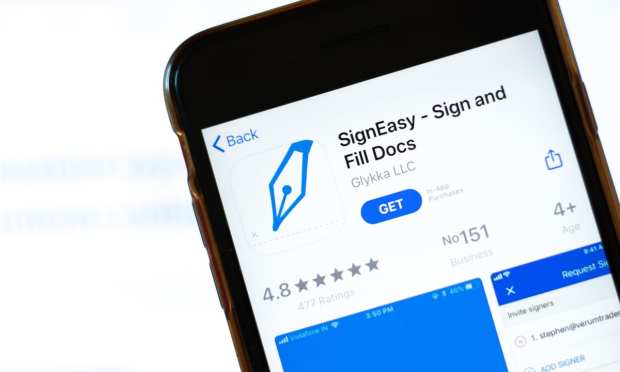How eSignature Technology Earned The Trust Of Procure-To-Pay

Electronic signature (eSignature) technology isn’t new — and nor is its legal validity. In the U.S., legislation passed way back in 2000 made eSignatures legal in every U.S. state and territory via the ESIGN Act, and consumers have welcomed that validity as a way to more efficiently sign off on important documents.
As a result, businesses have embraced the eSignature in the front office in an effort to deliver a positive customer experience. In the back office, however, adoption has lagged, despite organizations’ modernization efforts — and despite the fact that signatures remain a critical component in so many workflows.
In procure-to-pay operations, a signature is often required to approve purchase orders (POs), invoices and payments, and thus vital to the ability for B2B trade to flow smoothly. Over the last year, SignEasy Chief Operating Officer Kyle Flowers said the adoption of eSignature technology has exploded in the back office, largely on account of the pandemic.
In a recent conversation with PYMNTS, Flowers explored how eSignatures can not only promote digitization of key workflows like procure-to-pay and B2B payments but are agile enough to work with the more legacy technologies in place today, elevating their functionality with minimal disruption.
The B2B Payment Gatekeeper
At multiple points along the procure-to-pay journey, the signature remains the gatekeeper to moving to the next phase. At the broad level, that means the signature is key to initiating a payment — and therefore, key to supporting the cash flow of suppliers (as well as cash flow for buyers looking to accelerate B2B payment for an early payment discount).
According to Flowers, in today’s ecosystem of digital documentation, a seamless signature workflow is key to reducing time to money. What eSignature technology can do, he said, is turn spreadsheets filled with cells of data into actionable POs and invoices.
“Those boring numbers in cells need approvals to become payments,” he said. “Now, they can become payments a whole lot faster and ultimately put money into a bank account.”
Traditionally, the process for manually approving a document and signing it could take between nine and 25 days. Digital signature technology — especially when it’s integrated into platforms where those documents live — can reduce that time down to a few hours.
The pandemic has dramatically accelerated the adoption of eSignature technology among corporates and small businesses, noted Flowers, adding that the adoption rate has fast-tracked dramatically as a result of the health crisis and remote working requirements.
“The digital transformation that we’re seeing now as an effective byproduct of COVID has really accelerated what I think would have taken 10-plus years to adopt, at the rate of adoption we’re seeing now,” he said.
Enhancing Legacy Tools
The need to digitize has left a massive window of opportunity for eSignature technology as more organizations come to realize that eSignatures are, in fact, legally enforceable and valid.
But the historical delay in adoption reflects a broader challenge that businesses, especially small to medium-sized businesses (SMBs), can face: Despite the push and desire for modernization, reliance on legacy workflows and technologies remains commonplace. While the COVID-19 pandemic has accelerated digital transformation, solutions like PDF invoices and spreadsheets have stuck around.
This challenge presents an opportunity, however, for eSignature solutions to elevate the functionality of those legacy tools.
It’s a tactic that SignEasy recently deployed when it announced an integration with Google Sheets, allowing business end-users of the spreadsheet platform to facilitate electronic signatures within the portal. Flowers noted that procure-to-pay workflows, including PO and invoice approvals, were top-of-mind when enabling the integration.
“It helps business owners to leverage tools that they’re familiar with in a very seamless way in order to take very important steps of getting approvals and signatures on documents that ultimately lead to payments,” he said, “whether the payment is a result of completing a contract or the result of an authorized invoice.”
It’s all well and good to push for organizations of all sizes to embrace modern, cutting-edge solutions, and with spreadsheets having such a bad rap in today’s B2B ecosystem, firms are certainly interested in migrating to different tools. But the spreadsheet remains a familiar and, indeed, effective tool for many firms that rely on the tool for critical business functions.
But by using technologies like eSignatures within those systems, what was once a legacy and clunky tool can quickly be enhanced to become a more effective solution within the procure-to-pay cycle.
Electronic signature technology, Flowers added, can also boost visibility for business owners who can then track the documents that obtain signatures as they flow down the chain of command. It’s an element of easily auditable record keeping that can combat fraud and strengthen transparency.
“The signature is required at so many points along the procure-to-pay workflow,” Flowers said. “Whether it’s a sales contract or a purchase order, an eSignature solution can help add value.”
